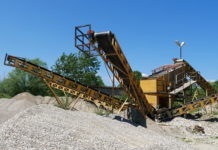As temperatures rise during the summer months, the risk of heat stress and dehydration becomes a significant concern for construction workers. Working outdoors in hot and humid conditions puts individuals at risk of heat-related illnesses, which can have serious consequences if not addressed promptly. In this article, we will explore the dangers of heat stress and dehydration in the construction industry and discuss strategies to protect workers and ensure their safety during the summer.
Understanding Heat Stress and Dehydration
Heat stress occurs when the body is unable to regulate its temperature effectively in hot environments. This can lead to a range of heat-related illnesses, including heat exhaustion and heat stroke. Dehydration, a condition where the body loses more fluids than it takes in, often accompanies heat stress and exacerbates its effects. Construction workers are particularly vulnerable to these conditions due to the physically demanding nature of their work and prolonged exposure to the sun.
Symptoms of heat stress and dehydration may include:
- Excessive sweating
- Fatigue and weakness
- Dizziness or lightheadedness
- Headaches
- Nausea or vomiting
- Rapid heartbeat
- Confusion or disorientation
Ignoring these symptoms can lead to serious health complications, including organ damage and even death in extreme cases.
Protective Measures for Workers
To safeguard the health and well-being of construction workers during the summer, it is essential to implement preventive measures and provide adequate support. Here are some strategies to protect workers from heat stress and dehydration:
- Hydration: Encourage workers to drink plenty of fluids throughout the day, even if they do not feel thirsty. Water is the best option for staying hydrated, and sugary or caffeinated beverages should be avoided as they can contribute to dehydration.
- Rest Breaks: Schedule frequent breaks in shaded or air-conditioned areas to allow workers to rest and cool down. Limiting the duration of outdoor work during the hottest parts of the day can also help reduce the risk of heat-related illnesses.
- Protective Clothing: Provide lightweight, breathable clothing that covers the skin to protect against sun exposure. Additionally, hats with wide brims and sunglasses can help shield workers from the sun’s harmful rays.
- Training and Education: Educate workers about the signs and symptoms of heat stress and dehydration, as well as the importance of taking preventive measures. Training should also include information on how to recognize and respond to emergencies promptly.
- Workload Management: Adjust work schedules and tasks to minimize strenuous activities during peak heat hours. Consideration should be given to the intensity and duration of work to prevent overexertion and reduce the risk of heat-related injuries.
Personal Injury Claims
Despite taking precautions, construction workers may still suffer from heat-related illnesses due to employer negligence or inadequate safety measures. In such cases, affected individuals may be entitled to pursue personal injury claims to seek compensation for their damages, including medical expenses, lost wages, and pain and suffering.
To file a successful personal injury claim related to heat stress and dehydration, it is essential to establish the following:
- The employer had a duty to provide a safe working environment for employees.
- The employer breached this duty by failing to implement adequate heat safety protocols or provide necessary training and resources.
- The worker suffered harm as a direct result of the employer’s negligence.
- Workers should document any incidents of heat-related illness and seek medical attention promptly. Additionally, they should consult with an experienced personal injury attorney to assess their legal options and determine the best course of action.
Heat stress and dehydration pose significant risks to construction workers during the summer months. Employers must prioritize worker safety by implementing preventive measures and providing adequate support to mitigate these risks. By promoting hydration, scheduling rest breaks, and offering protective clothing, employers can help protect their workers from heat-related illnesses and create a safer working environment. Moreover, workers who suffer injuries due to employer negligence may be eligible to pursue personal injury claims to seek compensation for their damages. By raising awareness and taking proactive steps, we can ensure the well-being of construction workers and prevent heat-related injuries in the workplace.




































